Introduction
Wild animals live in the earth’s unpolluted, remote corners. They dwell in places untouched by humans. They are almost in their natural state and are representative of high diversity in form, activity, and accommodation. The wild lions of Africa’s savannas rule their beautiful domain. The snow leopards of the Himalayas survive in their harsh land due to their elusive nature. Such is the character of wild animals, with their resilience and variety.
Their value is far beyond their attraction. Wild animals constitute an absolute requirement for the ecosystem balance of earth. They assist with food chains and population control along with being highly vital for an ecosystem’s overall health. Predators keep herbivores in check. They prevent overgrazing. Pollinators, like bees and bats, help plants reproduce. They enable most of the food we eat.
Understanding these wonderful animals is a quest into the deep intricacies that ensure life on this planet. Beauty is more than just a view. We must recognize our roles in conserving it. We must preserve their habitats and protect their species. Mankind’s actions are threatening the survival of the species. They are destroying forests, altering the climate, and poaching. There is, therefore, a felt sense of shared stewardship of nature.
Wild animals, too, are cultural, spiritual, and educational resources throughout the world. They are celebrated in art, folklore, and literature for qualities like strength, wisdom, and liberty. Much can be learned about adaptability, cooperation, and survival from wild animals as well.
This detailed guide explores wild animals. It enriches our view of their diverse, significant habitats and behaviors. They are important both culturally and ecologically. Our knowledge will foster respect for this marvelous creature. It will create a presence that will enrich our world forever.
Wild animals have many different varieties
Wild animals best embody Earth’s vast, varied life. They live in our enormous ecosystem. Each has unique adaptations. They allow a species to survive in specific habitats, like dense rain forests, vast grasslands, deep oceans, or rugged mountains. These animals have a stunning appearance and behavior. They also balance their ecosystems.
Classification by Habitat
1. Forests
Forests, the earth’s lungs, provide food and shelter to diverse wildlife. These include giant tropical rain forests and temperate woodlands, and many of the world’s most iconic species live in these areas.
Examples:
Tigers of India: They are top predators. They keep prey in check. This prevents vegetation loss and protects other herbivores. Tigers are silent, powerful, and agile. They are the forest’s unmatched rulers.
Orangutans of Borneo are called “forest gardeners.” They disperse seeds, which helps the forests grow and thrive. Tree canopies are the orangutan’s lifeline; save them.
Koalas in Australia: Koalas are energy-sparing specialists. They sleep or digest their tough, fibrous diet of eucalyptus. But their future is tied to the health of Australia’s forests.
Thousands of smaller species, from buzzing insects to colorful birds and amphibians, also call forests home. Each one serves a purpose, from pollination to pest control, highlighting the interdependence of forest life.
2. Grasslands
Grasslands are open, sunlit ecosystems dominated by grasses. Grazers and their predators maintain a dynamic relationship in these open, sunlit ecosystems. Their habitats are formed by the movement of large herds, seasonal changes, and occasional wildfires.
Examples:
African Elephants: They are “ecosystem engineers.” They clear grasslands of trees. This helps other species maintain those open landscapes.
North American Bison: Once nearly extinct, they have been reintroduced into prairies. Their grazing promotes diverse plants and healthy soils.
Kangaroos in Australia: They are ecological indicators of prairies and scrublands. They are vital for seed dispersal and as prey for top predators.
Grasslands are open habitats, and therefore cheetahs and lions have sufficient space to run at their top speed. Hence, some of the most dramatic wildlife interactions take place in such ecosystems.
3. Aquatic Ecosystems
Water covers more than 70% of the Earth’s surface, thereby forming an enormous and diversified habitat for aquatic life. The open ocean and coral reefs with thousands of fish are some of the most biodiverse ecosystems on Earth.
Examples:
Dolphins: They are the epitome of social interaction. Dolphins use echolocation to hunt and communicate. They live in complex pods that show an indescribable intelligence.
Sharks are apex predators: They control fish and prey populations. This maintains healthy marine ecosystems.
Jellyfish: They may seem simple, but they are vital in marine food chains. They are prey for larger animals and consume microorganisms like plankton.
Freshwater ecosystems, like rivers and lakes, are aquatic. They house otters, crocodiles, and other freshwater fish. These ecosystems contribute to biodiversity and human livelihoods.
4. Mountains
Mountains are perhaps the most hostile living conditions: cold climates and steep terrains. However, an incredible variety of wildlife has adapted to these harsh environments and thrives in isolation.
Examples:
Snow Leopards These are scarce predators, so well adapted to the environment: thick fur keeps them warm, and long limbs allow them to move easily across mountainous slopes.
- Mountain Goats Mountain goats are agilely climbing animals with specific hoofs that allow them to climb steep cliffs and avoid predators.
- Condors Condors fly over mountains at a 10 feet wingspan, scrounging carrion and recycling nutrients.
- Mountain ecosystems may become biodiversity hotspots because species occur nowhere other than in such geographic isolation and these conditions.
Wild Animals Name
Wild animals are vital to the Earth’s ecosystem. Their names and traits are key to appreciating their roles in nature. These animals, from majestic predators to humble herbivores, are vital. They help balance their environments. Read on for a deep dive into 10 famous wild animals. We will explore their unique behaviors, appearances, and cultural significance.
Lions (Panthera leo) are the “King of the Jungle.” They are the most majestic and powerful big cat. They are social animals, native to the savannas and grasslands of sub-Saharan Africa. They live in prides and are territorial. Their loud roar supports this. So, they are feared, and recognizable, predators.
Tigers, Panthera tigris, are the largest wild cats. They are solitary hunters, known for their bright orange fur with black stripes. Ranging across Asia from Siberian forests to the jungles of India, where they serve to keep the populations of herbivores under check.
Elephants (Elephantidae) – the giant gentle of the animal kingdom. The largest land mammals, these are highly intelligent animals, bonded to their family, and they live a very long time. They play an important role in their ecosystems by knocking down trees and creating waterholes, which other animals enjoy.
Giraffa camelopardalis-the giraffe-is the tallest creature in the animal kingdom; its neck can grow as long as 6 feet. Herbivores, these feed on leaves of tall trees, often grazing about the savannas of Africa. Giraffes are identifiable with their long necks, long legs, and distinctive patches on their fur.
Gorillas (Gorilla gorilla) are native to Central Africa. They are the strongest, intelligent, and most complexly structured animals. They live in groups known as troops, and their behavior is almost the same as that of humans. Therefore, scientists are highly interested in studying these animals.
Zebras are herbivorous mammals, black and white striped in color, belonging to the Equus quagga species. They are quite closely related to horses and donkeys and often roam in grazing groups called herds. Social animals, the stripes on the zebra body are believed to camouflage and confuse predators.
Kangaroos (Macropus) Kangaroos are the symbols of Australia. The marsupials have very strong hind legs, and they travel long distances by hopping on them. Kangaroos are herbivores, and one can find them mainly in the Australian outback. Their reproductive system is unique because the female can carry another embryo in her womb while nursing a joey.
Ursus maritimus-Polar Bears The land carnivores are quite large. Arctic solitary hunters, like polar bears, need a very cold environment. Their blubbery fur and large paws help them hunt seals, their usual food, across icy surfaces.
Penguins belong to the family Spheniscidae. Penguins are flightless birds. They live in cold, southern climates, especially Antarctica. Penguins are excellent swimmers and plunge into the ocean deep to catch fish, krill, and squid. Their tuxedo-like appearance and social behaviors make them very popular among wildlife enthusiasts.
Cercopithecoidea and Platyrrhini – This infraorder is from the family of social primates, the monkeys. Their sizes range from small tamarins to massive baboons. They can control some insect populations, disperse seeds, and balance ecosystems.
Each of these wild animals is not only interesting in itself but also plays a critical role in the health and functioning of their ecosystems. These animals boost biodiversity and ecosystem stability. They do this by controlling other species and shaping their environment. Knowing their names, behaviors, and habitats helps us protect them and their environments.
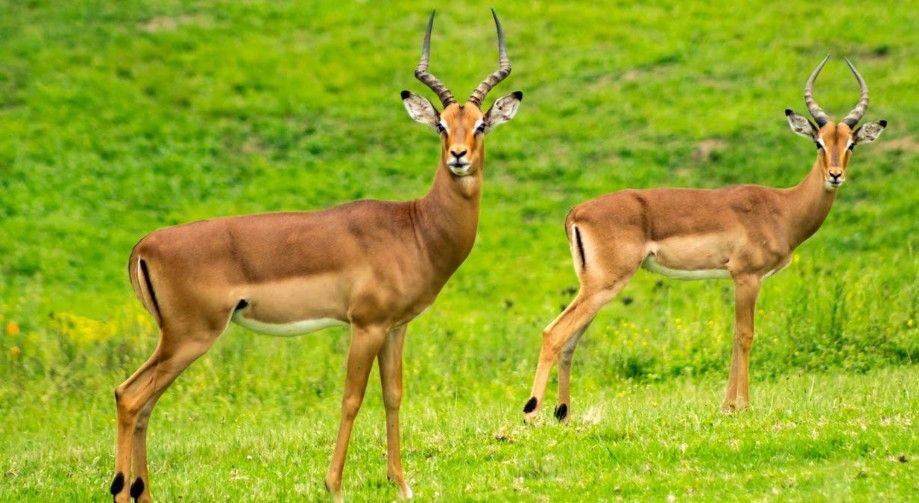
20 Wild Animals Name
- Wild animals, from the largest mammals to the smallest insects, are part of the biodiversity on the planet. Here is a list of 20 wild animals with their distinctive features, habitats, and behaviors:
- African Elephant (Loxodonta africana) – The African elephant is the largest land mammal. Its big ears regulate its body temperature. They stay in herds, led by matriarchs, and are famous for their social structures and impressive memory.
- Bengal Tiger (Panthera tigris tigris) – The Bengal tiger is one of the most iconic and endangered big cats in the world. They live in the jungles of India and are very powerful predators, hunting prey up to the size of deer or buffalo.
- Giraffe (Giraffa camelopardalis) – Giraffes are the tallest land animals. Their long necks let them eat leaves from tall trees. They are known for their unique “patchwork” coats that help camouflage them in their natural habitats.
- Panda (Ailuropoda melanoleuca) – Pandas are Chinese, herbivorous mammals. They are known for their black-and-white fur. They are very reproductive and love to eat bamboo. They have a low reproductive rate and are considered a symbol of wildlife conservation.
- Jaguar (Panthera onca) – These are strong and shy large cats found in the regions of Central and South America. Being the largest of all cats of America, Jaguars are known for their ability to crush the skulls of their prey using the jaws.
- Koala (Phascolarctos cinereus)- Koalas are marsupials of Australia, feeding mainly on eucalyptus leaves. Their laidback lifestyle and loving looks have won wildlife fans.
- Wolf (Canis lupus) Wolves are social predators that live in packs and hunt in unison. They roam forests, tundras, and grasslands across North America, Europe, and Asia, playing a key role in ecological balance.
- Sloth (Bradypodidae) – Sloths are slow-moving mammals found in the rainforests of Central and South America. They spend most of their lives hanging from trees and are known for their low metabolic rate.
- Cheetah (Acinonyx jubatus) – Cheetahs are the fastest land animals, capable of reaching speeds up to 75 mph in short bursts. Their speed helps them hunt down swift prey like gazelles on the African savanna.
- Gorilla (Gorilla gorilla)- They are great, primates; the central Africa forests possess them. It lives in families, and being intelligent, and it also utilizes tools. Mainly endangered through habitat loss and poaching.
- Zebra (Equus quagga) – Zebras are grazing animals that are found in the African savannah in herds. Each has a black-and-white striped coat, and their stripes act as camouflage in the tall grasses.
- Lion (Panthera leo) – Lions are top predators, native to sub-Saharan Africa and parts of India. They live in prides with a strict social hierarchy and are known for their roaring calls and hunting abilities.
- Leopard (Panthera pardus) – Leopards are the spotted big cats of Africa and parts of Asia. They can adapt to all kinds of habitat and are very good climbers and hunters.
- Puma (Puma concolor) – Also known as mountain lions, pumas are solitary predators of the Americas. They are highly adaptable and can thrive in a variety of environments, including mountains and forests.
- Rhino (Rhinocerotidae) – Rhinos are large herbivores that have thick skin and one or two horns on their snouts. They can be found in Africa and Asia, where they are under threat from poaching and habitat loss.
- Turtle (Testudines) – Turtles are reptiles recognized by their hard, protective shells. They exist in various types of habitats: freshwater, oceans, and land.
- Kangaroo (Macropus) – This is an Australian marsupial with powerful hind legs. Kangaroos are known to cover long distances in search of food and water. They have a typical hopping gait very characteristic of their species.
- Polar Bear (Ursus maritimus) – This is the largest land carnivorous mammal that lives in Arctic environments. It is a solitary hunter, mostly feeding on seals.
- Penguin (Spheniscidae) Penguins are flying birds, but they live in cold climates. They are very fine swimmers as they use their wings to move through the water to find food.
- Snake (Serpentes) – Snakes are legless reptiles that inhabit a wide variety of habitats on Earth. Some snakes, like cobras and vipers, are venomous. Others, like pythons, are non-venomous constrictors. They help control rodent and other animal populations.
- These wild animals are very diverse. Each has adaptations that let it thrive in its environment. Predator-prey dynamics, environmental shaping, and migration all matter. Such species are vital to maintaining ecological balance.
Summary of How to Tell Wild Animals
How to Tell Wild Animals” is a wonderful poem by Carolyn Wells, with elements of both comedy and education. The poem, in a fun way, teaches readers to tell wild animals apart. It does so using their traits and behaviors. In each stanza, an animal is described, giving clues on how to identify it in the wild, which makes the reading enjoyable for children and adults alike.
For instance, the poem tells that to identify a bear, one should look out for some of its characteristics like “shaggy fur” and “sharp claws.” The same is true for lions, tigers, and giraffes. Their size, fur patterns, and mannerisms are the poem’s identification tips.
This is a beautiful poem which makes it simple. It has funny, accurate descriptions of wild animals. This engages readers and helps them identify animals in nature. The playful tone of the poem also makes it memorable, and a sense of curiosity about the natural world follows.
Despite its whimsical style, “How to Tell Wild Animals” is a great resource. It teaches about wildlife and fosters an appreciation for Earth’s amazing animal variety. The quality of the poem is such that it makes education laughable, therefore becoming a great work that any age can relish.
Wild Animals in Literature and Culture
Wild animals have long inspired human imagination. They appear as symbols, characters, and metaphors in literature, art, and folklore. From ancient myths to modern-day novelists, wild animals illustrate human qualities and ideals. Wild animals in literature and culture fascinate us. They have made us explore our emotions, behaviors, and bond with nature. This section explores the portrayal of wild animals in literature. It looks at their symbolism and cultural significance.
How to Tell Wild Animals by Carolyn Wells
A fun favorite poem on wild animals is that written by Carolyn Wells, “How to Tell Wild Animals.” The writer humorously reveals how to find wild animals. He uses their unique traits and behaviors. It’s a light, playful take on nature. It is light-hearted. This approach entertains the reader. It also, subtly, educates about various species’ traits.
Poetic devices used in this poem:
Alliteration: The poem uses alliteration for a catchy, musical rhythm. It describes various animals. For example, “Charming chameleon” has a playful sound. It mimics the chameleon’s elusive, changing nature. Such use of sound enhances the enjoyment of the reader while reinforcing the descriptive qualities of the animals.
Imagery: Wells employs strong imagery throughout the text that gives a mental image of each animal so clear. For instance, the tiger’s description is for the eye and touch. It describes the silence of its movement and its location in the world. Such imagery will connect the readers to the animals she is writing about almost tangibly.
Humor and Wit: The poem is both playfully and educative in its tone. It teaches the reader to identify wild animals by unique traits, like the tiger’s “tigerish” features. It does so with a light-hearted, humorous tone.
It invites one to heed wild animals. Carolyn Wells makes this invitation with a poem. It uses peculiar, unique qualities instead of conventional methods. This method of learning was both informative and entertaining. It helped to understand wildlife literature.
Cultural Significance of Wild Animals
Apart from their use in literature, wild animals also hold a great cultural and symbolic meaning. They often stand for human virtues or represent metaphors for certain aspects of life. Animals, through these symbols, become more than living creatures. They represent ideals and lessons that humans aspire to or fear.
Lions: Power and Leadership In most cultures, lions have been interpreted to mean power, courage, and leadership. Lions are representative of the best qualities of a ruler or leader in many societies. This is clear in famous royal crests, like the British Royal Coat of Arms. In myth, lions are often seen as gods’ companions and the king’s protectors.
In Greek mythology, for instance, there is the fabled Nemean Lion that only a few of the bravest heroes can slay. Similarly, the lion is, in African culture, the king of the jungle-a powerful, noble figure. The lion’s majestic looks and fearsome presence symbolize authority and valor. It is a universal symbol, often found in literature, heraldry, and art. These works remind us of the qualities needed to lead effectively.
Owls: Wisdom and Mystery
Owls are one of those animals imbued with deep symbolic meaning across different cultures. In Greek mythology, the owl was associated with Athena, the goddess of wisdom, making it a symbol of intelligence, insight, and learning. This link has persisted in literature and pop culture. Owls are often seen as wise, knowledgeable creatures.
The owl’s nocturnal habits and haunting hoot add an element of mystery to its persona, linking it to the unknown and the unseen. In many cultures, owls are said to hold spiritual knowledge and are often thought to be a sign that one needs to seek deeper understanding. In literature, owls are sometimes guides who lead the protagonists through difficult quests or offer sage advice.
Tigers: Bravery and Independence. Their raw power and solitary nature make tigers symbols of bravery, independence, and ferocity. This is a cultural symbol for most Asians, especially the Chinese. The tiger, one of the 12 zodiac animals, represents great power and survival against all odds. In India, the tiger is key to Hindu mythology.
It is the mount of the goddess Durga and symbolizes the victory of good over evil. In the West, the tiger is both beautiful and terrible. It represents a paradox of power and grace. It has given the tiger great metaphorical power. It represents human qualities, like survival in adversity and standing alone.
Wild Animals in Folklore and Mythology
In most mythologies and folktales around the world, wild animals play a significant role. These wild animals can be divine messengers or guardians of sacred knowledge. Most embody a culture’s spirit.
The Wolf: In most Native American cultures, the wolf is a representation of loyalty, courage, and family. They are wise and have a strong sense of community. They are esteemed for their hunting skills and teamwork.
The Bear: As such, bears were portrayed in folklores all over Europe and North America as symbols of safety, strength, and maternal concern. For this animal, hibernation shows aspects of renewal and rejuvenation. This animal, according to the ancient traditions of several Indigenous groups, is said to act as a spiritual leader.
Regional Features {England }
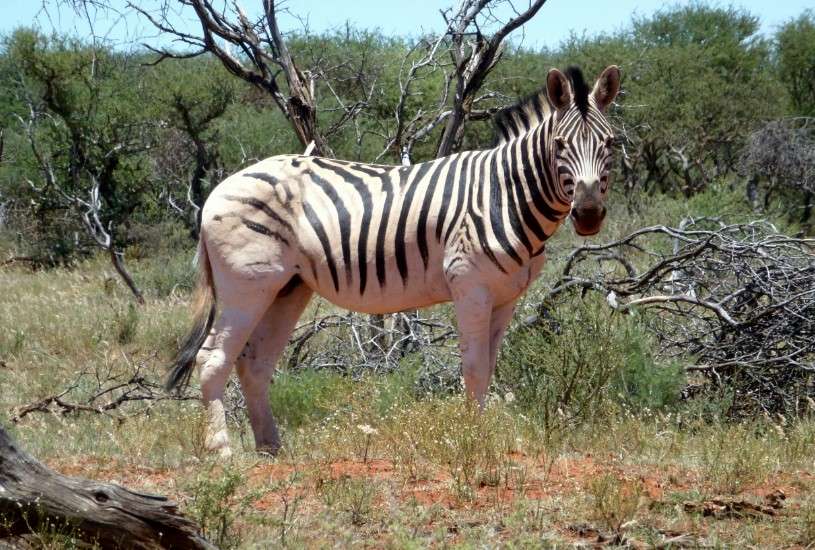
England being relatively temperate, the fact that its population is humanly exceptionally high has made this capacity to accommodate a surprisingly high amount of wildlife a bit unforeseen.
Red Foxes. Being highly adaptable both to city and rural scenery, red foxes equally search for small mammals, fruits, and insects to eat.
Hedgehogs: These thorny animals are representatives of their looks and help maintain the ecological balance by regulating the number of insects.
Colorado
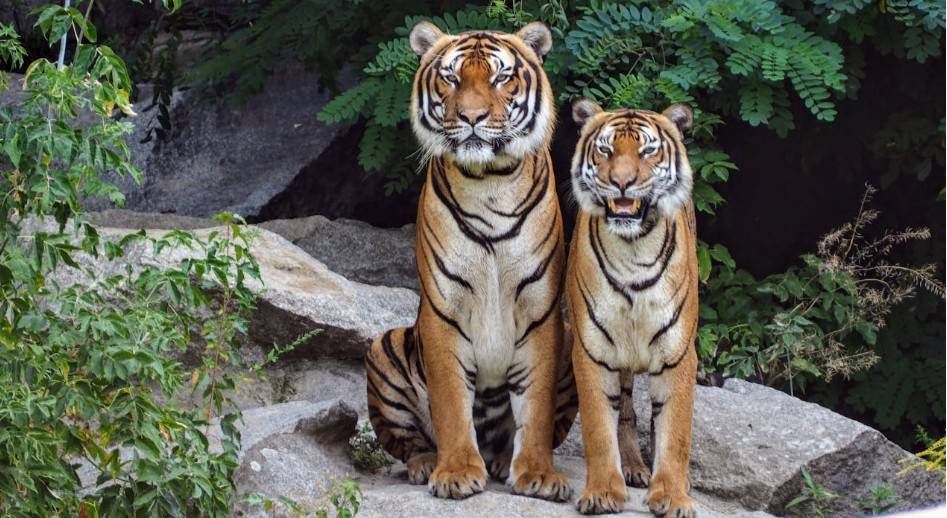
Colorful State, as it is known, lies within the Rocky Mountains. It has diverse ecosystems, ranging from alpine tundras and forested valleys.
Black Bears: The obligatory omnivores feed along the riversides and river banks to act as distributors of seeds.
Elk: This keystone species consists of big social animals; grazing by them helps distribute the vegetation patterns.
Mountain Lions: Also known as cougars, stealthy killers, which are a factor to maintain the balance of the biosphere as a means of controlling the herbivores.
Amazon Rainforest
One of the biologically most diverse areas on Earth, with thousands of species that are found nowhere else on the globe.
Jaguars : Jaguars are apex predators, and their hunting behaviors check populations of capybaras, caimans, and other animals.
Anacondas : These are the largest snakes on earth, slithering stealthily and by brute force in order to snatch aquatic as well as terrestrial animals.
Macaws: Macaws brighten up the rainforest with colors as they disperse seeds in order to revive the same forest they live in.
The region houses millions of insects, amphibians, and smaller mammals of which many still remain unclassified, making this a very crucial site as one of the worlds’ biodiversity hotspots.
Behavioral Insights of Wild Animals
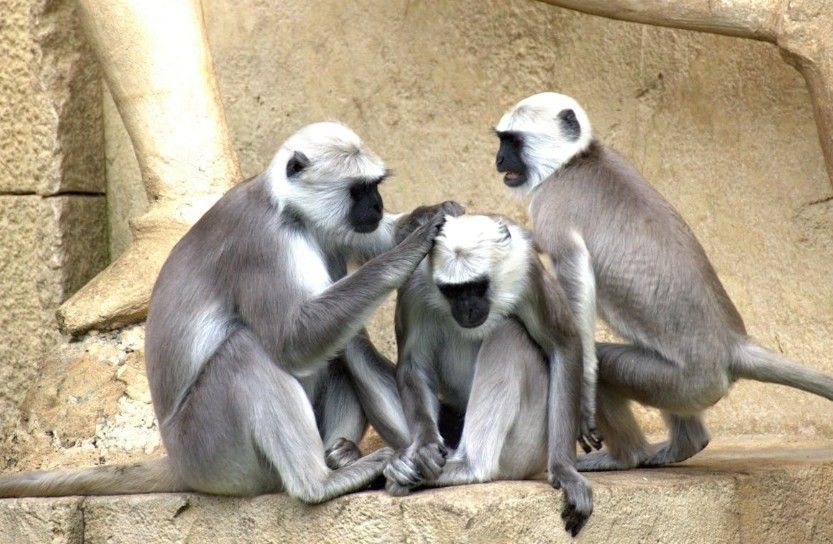
Although the wild animals are really very interesting to see, their activities are important for their survival. From adapting themselves to hostile climates to strategizing their hunting, grazing, and evading predators, the animals in the wild are simply fantastic in terms of their intelligent acts and hardiness. Now let’s see some of the fascinating behavioral traits.
Adaptation to Environments
Camouflage is surely one of the most brilliant survival techniques that nature has to offer, keeping animals either hidden from predators or sneakily sneaking upon their prey.
Chameleons: These reptiles change the color of their skin to blend with the environment. This great adaptation makes it hard for any predators to notice them while catching unsuspecting insects off guard.
Polar Bears: Their fur color is such a good match for the snow and ice that in the Arctic, they are almost invisible to prey and predators alike.
Hibernation: Hibernation is the survival strategy of animals for periods of scarcity of food and rough conditions.
They hibernate in dens during winter and their metabolic rate drops to make conservation of energy possible. This makes them a while without eating and drinking.
They are small mammals that hibernate in caves. To get through the cold seasons, they use less energy to wait for the insects when their products are plentiful.
Animals may impersonate other species or parts of their environment in order to avoid threats through mimicry.
Viceroy Butterflies: They look like toxic monarch butterflies, so predators will not eat them.
Leaf-Tailed Geckos: Their shape and color is like a dead leaf, hence they are very hard to be seen in the forest.
Survival Strategies
Hunting and Foraging Survival in the wild often depends on an animal’s ability to find food efficiently, whether through hunting or foraging.
Lions: These big cats hunt in pride, consuming enormous prey like zebras and wildebeests. The group hunting of lions forms the possibility of success by coordinating them together.
Deer: These are herbivorous creatures that feed in the company to dine on plants while watching out for predators to detect threats from an early age.
Migration is a seasonal movement that helps in aiding the animals find food, breed within good conditions, and elude unfavorable climatic conditions.
Arctic Terns
These birds are said to have traveled the longest migrations. The arctic terns travel from the Arctic to Antarctica and vice versa every year, following seasonal food supplies.
Wildebeests
These wildebeests are mostly known for their heroic migration in Africa. The animals migrate in huge herds, cross rivers, and kill any predators that come in the way to find more pasture.
Communication
Wild animals communicate in different ways to ensure survival through coordination, warning signals, or calls for mating.
Wolves howl to send messages to their pack, locate themselves, and mark territory.
Elephants, through low frequency rumbles, and body postures, also communicate over distant distances.
Lesser-Known Adaptations
Tool Use
There are animals which are more than instinctive because they use tools to help survive.
Chimpanzees
They use a stick to try and fish termites out or stones to break open nuts.
Sea Otters
They swim with rocks breaking open shellfish, an enormous problem solver in itself.
Symbiotic Relationships
Some animals find survival by living off the survival benefit of associations with other species.
Clownfish and Sea Anemones
Clownfish live amongst the stinging tentacles of the anemone for safety, and its movement helps to circulate water for the anemone.
Oxpeckers and Rhinos: Oxpeckers perch on rhinos where they feed on ticks and give the rhino advance warning if danger is coming.
Why Behavioral Insights Matter
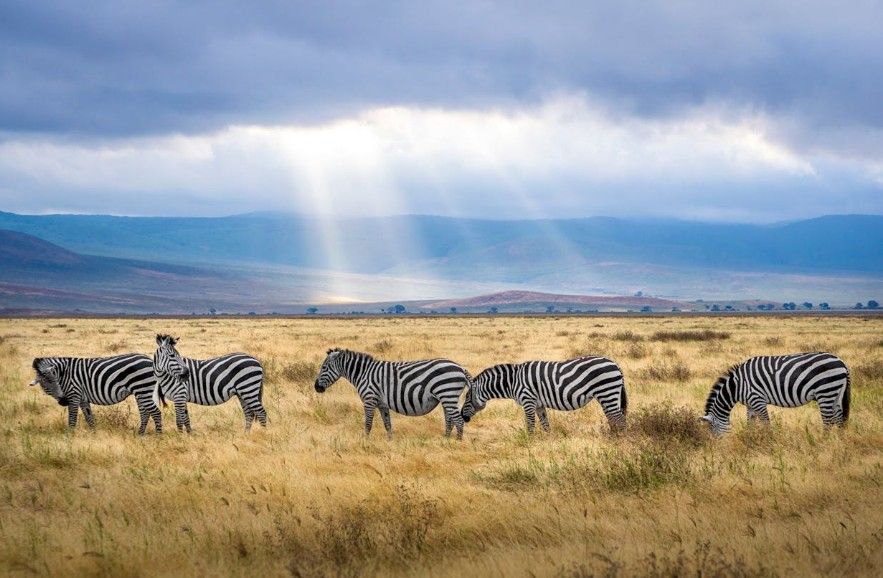
Understanding the wild animal’s behavior is important in conserving them. From how they cope, survive and interact with the environment, gives researchers ideas about how to better protect their habitat and ensure they survive.
Wild animals are not just survivors. They are vital to balancing ecosystems. Their fascinating behaviors show this. By respecting and preserving their natural habitats, we honor the incredible ways these creatures contribute to our world.
Dangerous Wild Animals
Wild animals are marvelous and very essential for the ecosystem but can be perilous to man, especially if their territory or safety is tampered with. Knowing which animal is dangerous and why helps minimize conflicts and guarantees safety in the wild.
Some Notable Examples of Dangerous Wild Animals
Dangerous Animals in Britain
Adders
Description: It is the sole poisonous snake to the UK and characterized by the zigzag marks across its back, with the ideal habitats heathlands, woodlands, and grasslands.
Danger: Adders aren’t aggressive. But, if provoked or stepped on, their venom can cause pain, swelling, or rare allergic reactions. However, due to easily available medicines, they never kill a man.
Precaution: Avoid walking through dense thickets and wear robust shoes in areas inhabited by adders.
Wild Boars
Description: Wild boars have been restocked in the UK and are abundant in woodlands. These animals possess strong, muscular bodies and long, pointed tusks and are extremely unpredictable.
Dangers: They will attack when cornered or threatened, especially if they believe their young are at risk. Their tusks are extremely lethal.
Precaution: Maintain a safe distance, particularly if you observe piglets, and do not make sudden movements.
Dangerous Animals in Other Parts of the World
Polar Bears
- Habitat: Polar bears are strong top predators that live in Arctic regions.
- Danger: Polar bears are more dangerous than other bears because they view humans as prey since their environment is very harsh and there is scarce food. Their massive size, strength, and speed make them highly dangerous.
- Precaution: Travelers in polar bear territories should carry deterrents like bear spray, avoid storing food improperly, and travel with guides familiar with the area.
- Crocodiles
- Habitat: Freshwater and brackish waters in Australia, Africa, and parts of Asia.
- Danger: Stealthy and explosive power, crocodiles can attack without warning, dragging their prey underwater. Saltwater crocodiles are among the most dangerous reptiles on Earth.
Warning
Do not swim or wade in areas reported to have crocodiles; heed local information and advice at all times.
- Large Cats
- Lions, tigers, and leopards.
- Danger
Agile, strong, and sharp, these hunters are highly skilled. They avoid people but may attack if cornered, threatened, or habituated to human presence.
Precautions
- Take a safari or trek in the wild only with a guided tour. Avoid approaching or exciting a large cat.
- For example, there are inland taipans of Australia, cobras of Asia, and rattlesnakes of North America.
- Risk : Bites are poisonous and can lead to paralysis, tissue damage, or death if not attended to in good time.
- Caution: In snake-infested areas, dress accordingly, and do not probe holes or under rocks.
- It is certainly exciting to experience wild animals face-to-face; however, first and foremost in the equation will always be one’s safety. Understanding their actions and taking certain precautions can thus minimize risks yet respect their status in nature. Here is the expanded guide in staying safe while around dangerous animals:
1. Awareness and Respect
- Wild animals are not by any means hostile beings: Most aggressive encounters have occurred because it feels threatened or is protecting their young or has been searching for food.
- Understand Their Behavior: Learn about the animals in the area before venturing out. Knowing how they respond to humans can help you avoid accidental provocations. For example, some animals freeze when scared, while others may charge.
- Keep an Eye on Your Surroundings: Keep watch for your surroundings, especially if you know the area is full of wildlife. Be on the lookout for tracks, scat, or sounds of nearby animals.
- Identify Warning Cues: Creatures usually show anger or aggression indicators before attacking. A bear could huff and stomp on the ground, or swish its paws; snakes rattle or hiss.
2. Avoidance
- Keep Your Distance: The surest way of avoiding a battle is to never get too close. This can be done with a pair of binoculars or a telephoto lens. Never go beyond the minimum approach distance for the species in question.
- Remain Silent and Calm: Animals get scared with noise or swift movements. Go quietly and talk quietly so as not to spook them.
- Do Not Approach Young: Parent animals are very protective of their young. In fact, when approached by potential threats, parent animals can even go into attack mode.
- Do Not Feed Wild Animals: Feeding animals will start associating it with human to get food sometimes, leading dangerous encounters later.
- It also badly affects their dietary habits and living patterns.
3. Preparation
- Preparation matters a lot: proper equipment with knowledge is available, so sometimes it will take a turn after an encounter as well.
- Bear Spray: Safety gear can stop large mammals: bears or mountain lions.
- Whistles and air horns can be used to deter some wildlife, particularly animals afraid of loud noises.
- Snakebite kits are wanted in areas where snakes are venomous and can provide a patient with some immediate first-aid treatment.
- Dress in good protective clothing. If there are snakes or heavy underbrush then wear boots and long pants. Wearing reflective clothing may make it more noticeable to moose or deer while walking during twilight.
- Know Emergency Protocols: Learn how to react if you encounter certain animals. For example, appearing larger can scare away a mountain lion, while remaining motionless may deter an attacking bear.
4. Habitat Respect
Respecting wildlife habitats lowers the risk of dangerous encounters. It also helps preserve ecosystems.
- Stay on Trails: Stay on marked trails to avoid entering areas where animals feel safe or hidden.
- Avoid Noisy Activities: Loud noises can frighten animals, causing stress or a defensive reaction.
- Do Not Approach Dens or Nests: Animals are very territorial when it comes to their homes. Approaching a den or nest can provoke an attack.
- Clean Up After Yourself: Dispose of food and trash properly. Leftover food or scents can attract animals, leading to closer, and potentially dangerous, encounters.
More Tips
- Travel in groups: Animals hate large groups of people.
- Visit at the right time: AVOID dawn and dusk when the predators are more active.
Teach children: Teach children that they should not disturb animals and how they must behave themselves in wildlife.
Human Precautions
- Do not feed or touch wild animals.
- Follow the guidelines on wildlife and their natural habitats.
- Carry safety equipment such as bear spray when going into the wildernes
Education Kits for Understanding the Wild Animal
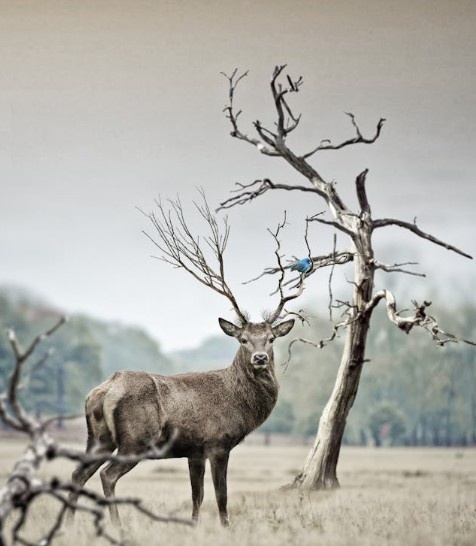
Knowing wild animals and their role in ecosystems aids conservation. It helps us learn to care for and respect nature more. Many educational tools aim to teach people of all ages about wild animals, their behaviors, habitats, and roles in the environment. From charts to multimedia, these materials teach and attract. They make finding info on wild animals easy and painless.
Among these effective learning materials is one below:
Wild Animal Charts
Among the best teaching aids about wild animals are illustrated guides. They categorize animals by habitat, behavior, or species. Such guides have great pictures, detailed descriptions, and fun facts about various animals.
Habitat-Based Guides: An illustrated chart can group animals by the habitat they live in. For instance, it will show groups for animals in the rainforest, savannah, arctic, or ocean. This will help the learner identify the relationship between animals and their habitats. These guides usually have detailed maps. They outline the animals’ locations. This makes it easy to understand their ranges and adaptations to those environments.
Behavioral Classification: Some illustrated guides explain how animals behave in their habitats. Such charts may indicate some behaviors, like being nocturnal, migratory, or hunting. These help the students know more than what the animals look like; how they live and interact with their habitats.
Species and Family-Based Guides: These charts focus on the species in a specific animal family or genus. They explain their evolutionary traits, features, and habitats. For instance, a chart may list types of bears (e.g., grizzlies, polar, black) and their traits, diet, and behavior.
These picture guides are very important in classrooms and in the field. They let students see animals in their natural habitats. It was a visual learning experience. The guides are easy references for complex ecological ideas. They aim to boost appreciation for biodiversity.
Interactive Media
National Geographic Kids Interactive media is a top way to teach kids about wild animals today. Websites like National Geographic Kids combine learning with fun. They offer extensive, entertaining materials. This includes videos, games, and quizzes that teach a child how to learn wild animals in dynamic, colorful, and engaging ways.
Videos: National Geographic Kids, for example, makes short, educational films. They bring wild animals to life. The videos will show the animal in their habitat, its behaviors, features, and interaction with other creatures. Watching them up close and in action will encourage empathy and connect people to wildlife.
Interactive Games: The games would entertain kids and adults. They would teach them about wild animals’ behaviors and traits. For example, the game will ask the player to match animals with their habitats or to recognize an animal by its features. Such an interactive content enforces learning with enjoyment and participation.
Quizzes and Puzzles: Quizzes and puzzles are also fantastic tools for learning. Following video or article presentations on wild animals, users can then take quizzes on what they learned. Quizzes can be built to assess facts about animals, conservation, or animal behavior. Puzzles can teach kids about a species. They enjoy using features and behaviors to piece together an animal’s identity.
The interactive media combines fun and learning. It helps the learner absorb and retain the message, not just at a surface level. The learning tools help younger audiences. They find traditional textbooks boring. Videos, games, and quizzes use a multimedia format. It caters to different learning styles. This makes education accessible and engaging for many learners.
Virtual and Augmented Reality (VR/AR)
Virtual Animal Tours Virtual and augmented reality (VR/AR) technologies took the education on wildlife a notch higher. Learners can use VR headsets or apps to take virtual tours of rainforests, savannahs, and coral reefs. They can see wild animals in their natural habitats. Such tools simulate the event with real-life experiences. They provide a close-up view of wildlife, all from home.
It will, for instance, immerse users into an elephant herd or a pride of lions for that unordinary first-hand look of the animal kingdom. It leads to a better understanding of animal behaviors and environmental threats. So, it shows the value of conserving wildlife habitats. It generates a bond for learners toward animals that can hardly ever be established by the use of conventional teaching tools.
Mobile Apps
With the advent of smartphones, mobile apps have become an unavoidable part of wildlife education. Apps like iNaturalist and Seek by iNaturalist let users identify wild animals. They do this by uploading photos of plants, insects, or animals they find. The app uses image recognition to identify the species. It provides details about the animal, like its habitat, behavior, and if it is endangered.
Mobile apps provide real-time data on the movements of wild, mostly migratory, animals. It will teach users about the migration patterns of animals, like elephants, sea turtles, and whales. They will learn why these animals suffer from habitat loss and climate change.
Many apps have educational games. They challenge users to explore the wild and its wildlife. For example, challenges can involve spotting animals or answering trivia about endangered species. It educates, but also motivates one to go out there and interact with nature.
It offers an education that blends tech and nature. For example, mobile apps let users interact with animals in real time.
Final Thought
Wild animals are not just creatures coexisting with man. They are parts of a delicate balance that sustains our planet’s ecosystems. From the highest peaks to the lowest lands, African elephants and Himalayan snow leopards are key to nature’s balance. They maintain food chains, pollinate plants, and distribute seeds. They also regulate other species, which helps ecosystems. If such animals do not exist, the web of life, keeping the balance running and life thriving on Earth, would just be unraveled.
As we learn more about wild animals, we may change how we view them. We now see their habitats and behaviors as complex. We also value their cultural significance. So, we may start to see them as part of the natural world, not as unrelated to us. Wild animals, whether apex predators, pollinators, or scavengers, create a web of life. We are part of it. Conservation, sustainable practices, and awareness campaigns can save these animals and their habitats. We need to protect and preserve them so that generations can come and be inspired by the same awe and wonder that wild animals inspire us today.
If the world cared about habitat preservation, it would push conservation to new heights. It is amazing that everything begins with education. It is vital for responsible stewardship of the environment. That’s the only way it should be, for wild animals to be able to live on and stay within their respective habitats.
After all, wild animals remind us how deeply all of life on Earth is connected. By seeing and respecting their intrinsic value, we can build a better relationship with nature. It will be more harmonious and sustainable. If we progress in conservation and education, we can save these magnificent creatures. They must be part of our planet’s future for generations.
Suggested Imagery
1. Sacred Rainforest for Exotic Animals: It’s bright and lush, full of wildlife. It has colorful, exotic birds like parrots and toucans. It also has shy jaguars and tree-dwelling monkeys. The dense canopy of this superior universe is where filtered sunlight shines through, casting a beam on all things below. There is chirping of insects, distant howls, and rustling of leaves all around to make the place full of energetic and lively action. In that scene, life forms of a wide variety that exist in the rainforest and describe how the creatures interact both with their surrounding as well as with other creatures in such a delicate form of balance.
2. A bird’s eye view of migrating birds against the open blue sky, a flying bird or a flock thereof in V-formations at such a breathtaking site. The V signified this figure represented not only the great co-operative power but also indicated the long migratory journey those animals undertake to traverse. Resilience with migratory animals traversing an incredibly long stretch under adverse weather conditions is breathtakingly symbolic while being interlaced with diversified species and different habitats.
3. Wild Animals: Chart by Habitat List of wild animals with identification of habitats in detail. The chart is a depiction of complete listing of wild animals with well-arranged habitat categorization. The chart might have the display of animals belonging to different ecosystems such as forests and grasslands, oceans, mountains, etc. This comprises colorful pictures or photographs of the animals with short description about the characteristics, behaviors, and the threats they undergo. This education tool would thereby give a distinct, understandable view of the readjustments diversified species have toward specific environments as well as its significance in the aspect of healthful habitats.
